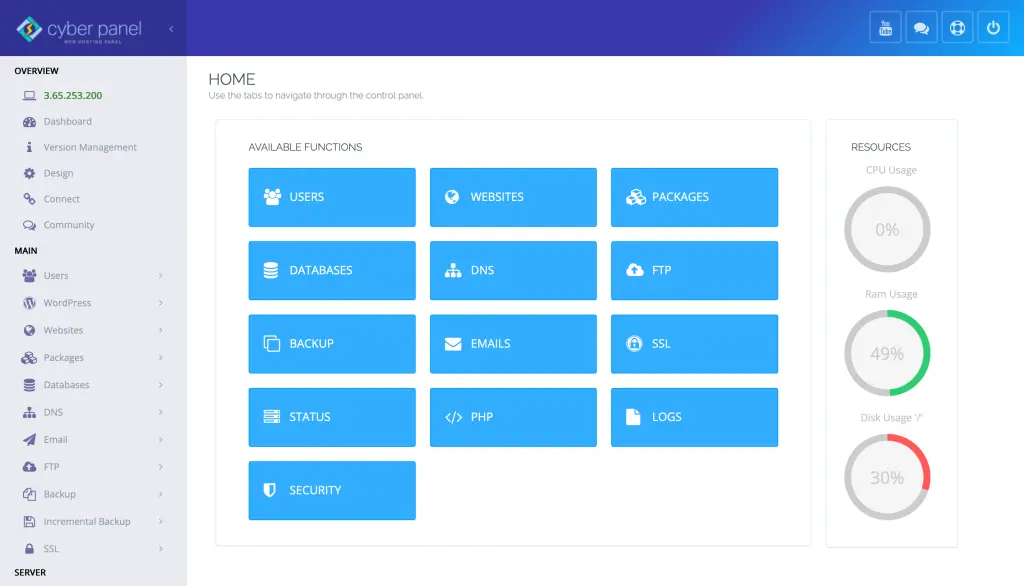Do you have the same long commands that you find yourself repeating in the terminal over and over? Or maybe you deal with complicated command lines that are time-consuming to write out whenever you need them. Many Linux users come face to face with this problem. However, there is a way to streamline all this and optimize your terminal experience. It is a Linux alias command.
It lets you create your own aliases for your most frequently used commands, saving you from repetitive typing and improving efficiency. OS X terminal command shortcut There is no doubt that command aliases in Linux will help you a lot, whether it is your first time or have been using Linux for a while.
This tutorial will walk you through a guide to everything that you need to know about the Linux alias command. This detailed article will teach you everything from what an alias is and how it works, to by step guide on how to set using your own aliases, helping you save hours of time in the run. We will also discuss some advanced tips and best practices you should keep in mind while working with command aliases in Linux, as well as things to avoid. Let’s dive in!
Linux Alias Command: What is it?
The alias command in Linux is, at its core, a way to create shortcuts — aka nicknames — for longer, more complex commands. By assigning an alias, simply type a word that is short and easy to memorize, to run a command. This command can be as simple as ls, or more complex as git status. An alias is essentially a shortcut for a specific command or set of commands that would otherwise require manual input.
Basic Syntax of the Linux Alias Command:
The alias command has a simple syntax:
alias [alias_name]='[command_ to_run]'- [alias_name]: This will be the shortcut or the alias that you will type in the terminal.
- command_to_run: Full command that will run when the alias is called
Create an alias for listing files with detailed information like the following:
Get exclusive access to all things tech-savvy, and be the first to receive
the latest updates directly in your inbox.
alias ll='ls -l'So now, when you type ll, it will execute the command ls -l and give you a more detailed listing of files in the current directory.
How to Make Command Aliases in Linux
On Linux, defining command aliases is an intuitive process. So, let’s go through it step by step:
Open the Terminal
First of all, open the terminal application in your Linux system. You can usually find the terminal in your application launcher if using a GUI-based Linux, or you can use the keyboard shortcut Ctrl+Alt+T.
Create an Alias
Essentially, to define a basic alias, we use the alias command, the desired alias name, and then the full command we want to link to our alias. For example:
alias gs='git status'This creates an alias of gs for the git status command. You can run git status when you type gs in the terminal.
Test Your Alias
Once you’ve created an alias, you’ll want to test it to make sure that it acts as you expect. Just type the alias in the terminal:
gsThis should run the git status command.
Make the Alias Permanent
By default, aliases you create in your terminal session are temporary and will be wiped out the next time you close the terminal. You have to add some alias to a config file like /, to make them permanent. bashrc or /. bash_profile for Bash users.
Example: Read alias from ~/. bashrc file:
echo alias gs=git status >> /. bashrc source /. bashrcMake sure you get the alias loaded every time you open a new terminal session.

How to View All Supported Commands in Linux?
In Linux, aliases are usually saved in the configuration files of the shell they were created on. Most Linux users have their configuration files stored in their /. The custom aliases for Bash shell are stored in the bashrc file. You can also use aliases If you’re using Zsh, aliases are typically stored in /. zshrc, and Fish shell users will find theirs in ~/. config/fish/config. fish. Here is where command aliases Linux are stored:
Bash: ~/.bashrc
Zsh: ~/.zshrc
Fish: ~/. config/fish/config. fish
To make aliases permanent, simply open the theme-specific file corresponding to your shell and append the alias definitions.
Why Use Command Aliases in Linux
Benefits of Linux Command Aliases Some of the major benefits include:
Increased Efficiency:
Aliases are useful because they allow you to type long commands and use long flags less repetitively. As you can see, it saves you from typing a long list of commands (e.g., ls -l –color=auto), which you must do every time you want to list files in a colorful manner, just type ll if you set alias ll=’ls -l –color=auto’.
Error Reduction:
The more commands reach my fingers the higher the chance to type them wrong. Aliases only require you to remember it and remembering anything like this is less error-prone by orders of magnitude.
Personalization and Adaptability:
It allows you to configure your terminal environment according to your specific needs. For example, if you are a developer, you might want to set up short aliases for commonly used Git commands or custom scripts you run frequently.
Multi-machine consistency:
When working with multiple servers or systems, having common aliases in your configuration files keeps your environment the same across machines.
Cleaner Terminal:
Your terminal commands are more readable and less cluttered. You don’t need to memorize or type in some complex command every time.
Command Alias Linux: How to Use Them(Best Practices)
Aliases are quite handy, but to make the most of them, there are a few best practices you should follow:
Use Descriptive Names:
Pick intuitive, descriptive names for your aliases so you won’t forget what they do. For instance, gs for git status makes sense, but command aliases such as cmd1 could leave you scratching your head later on.
Keep It Simple:
Not too many aliases, or you’ll overdo it. Make an alias only for commands that you use a lot, or have to type a lot.
Document Your Aliases:
So it’s useful to track the aliases that you create. You can create a separate file for it or even use a section in your shell config file for the same.
Avoid Conflicting Aliases:
System commands and other executables utilities, do not name your alias names similar to ones that already exist in the system. Such as if we made an alias rm into something other than rm.
Exercise Caution on Dangerous Commands:
Use caution making aliases for commands that can wipe out or change files (like rm or mv). Wrap Up You should always double-check your alias, so you don’t create a shortcut to something that’s potentially irreversible.
Role of CyberPanel: Linux Alias Command

Now, regarding CyberPanel, it doesn’t have much relation to command aliases Linux directly, but also important in web hosting and server management. CyberPanel is a web hosting control panel that makes it easy to deploy and manage web hosting tasks such as managing websites, databases, and server configurations.
E.g. if you use CyberPanel through commands (e.g. restarting, adding domains, editing DNS), you can create Aliases to make these processes faster. Or a command to manually insert in CyberPanel, we will understand about creating an alias so that we do not have to enter long commands repeatedly this will save time so we don’t have to enter long commands repeatedly which can be useful for web hosting providers, server administrators, etc.
FAQs: Command Alias in Linux
1. What does the Linux alias command do?
The alias command is a little bit of help for long commands that you use frequently to do the commands quickly and save yourself from mistakes.
2. How to make aliases permanent in Linux?
To make these aliases permanent, you’ll need to add them to the appropriate shell configuration file (e.g., ~/. bashrc for bash) and source the file afterward to apply the change.
3. Are you able to make aliases for complex commands?
Anyone can create an alias for any command no matter how complex. Even flags or arguments can be added to them.
4. How to list all available aliases?
To list all aliases currently available in your session, just type: alias
5. How do I remove an alias in Linux?
Yes, unalias command is followed by the alias name to delete it. For example, unalias gs deletes the alias for git status.
6. Do aliases the user adds, reflected across all users?
No, usually, the alias is user-specific. You’d have to add them to each user’s shell config file to share aliases.
7. How do I override an alias in Linux?
An alias can be disabled by invoking the command as a full path to where the command is found or removing the alias with unalias temporarily, use the original command
Conclusion: Get More Efficient by Mastering the Linux Alias Command
You can become more efficient and reduce errors in your terminal routine using the simple Linux alias command. Regular or power Linux users will benefit from knowing how to create and optimize aliases to save time.
Do you want to become a pro-Linux user? Start now, customize your aliases, and simplify execution!



